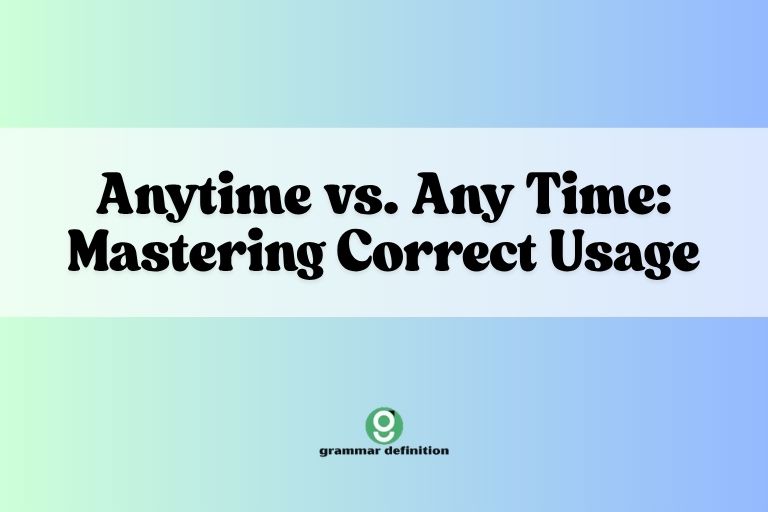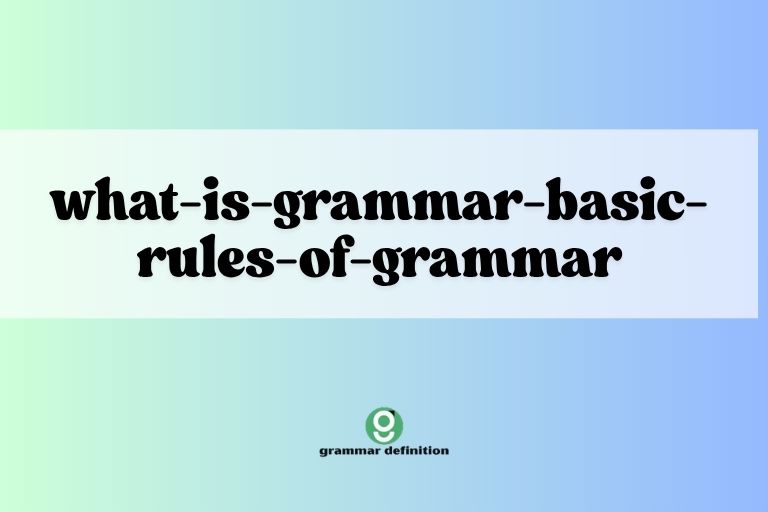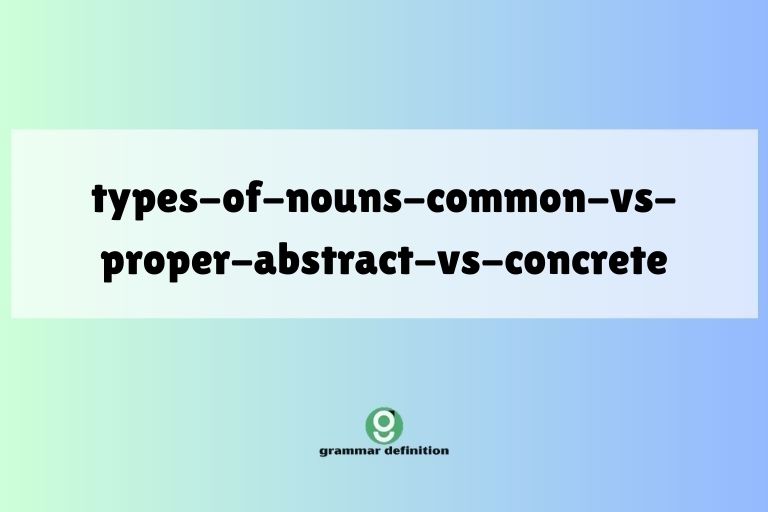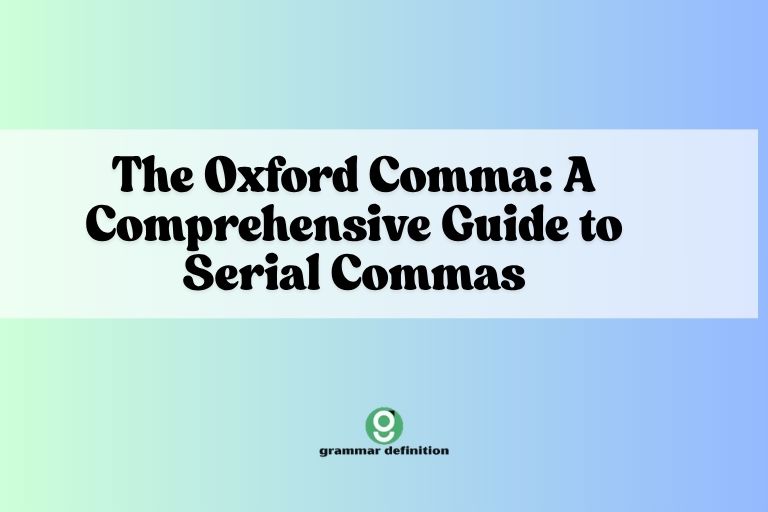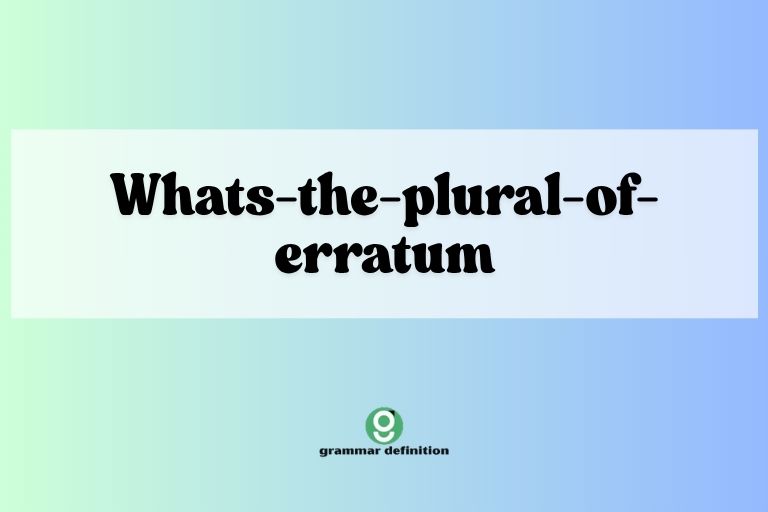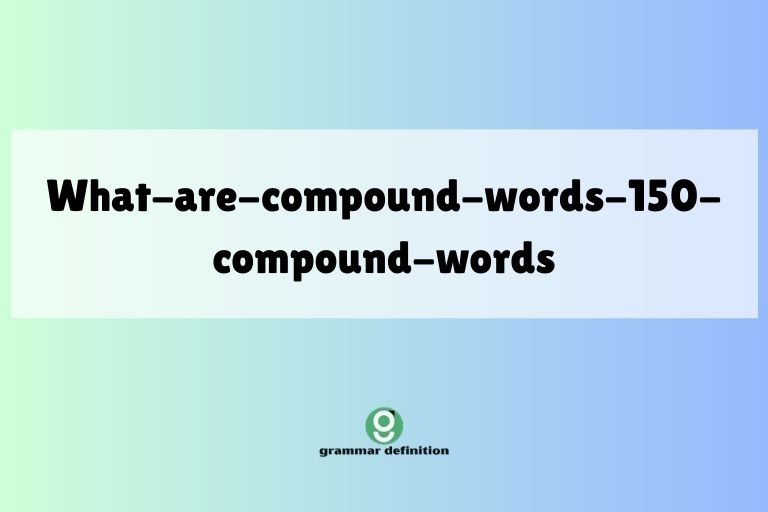Periods Inside or Outside: Mastering Quotation Mark Rules
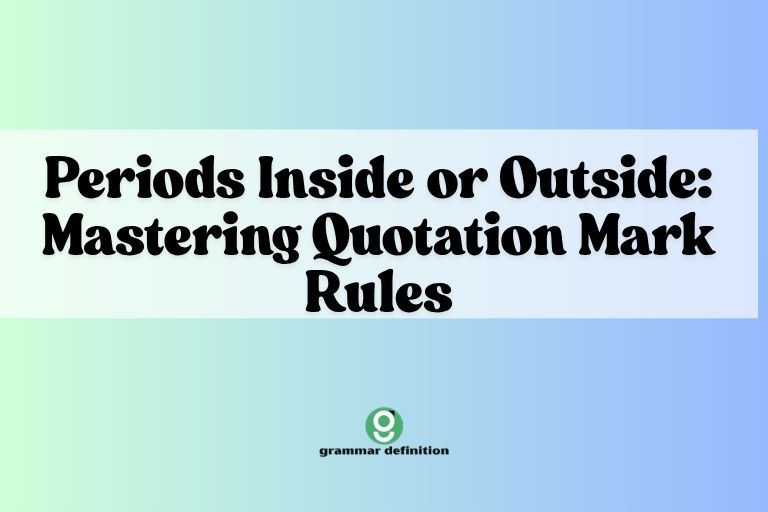
Understanding where to place punctuation marks, especially periods, in relation to quotation marks is crucial for clear and accurate writing. This seemingly small detail can significantly impact the readability and professionalism of your work.
Correct placement of periods with quotation marks ensures that your sentences are grammatically sound and easily understood. This article provides a comprehensive guide to these rules, offering definitions, examples, and practice exercises that will benefit students, writers, editors, and anyone looking to refine their English grammar skills.
Mastering this aspect of punctuation will enhance your writing clarity and credibility, making your communication more effective and polished. Let’s dive into the specifics of period placement with quotation marks.
Table of Contents
- Introduction
- Definition: Periods and Quotation Marks
- Structural Breakdown: Placement Rules
- Types and Categories of Quotation Marks
- Examples of Period Placement
- Usage Rules: Detailed Guide
- Common Mistakes to Avoid
- Practice Exercises
- Advanced Topics
- Frequently Asked Questions
- Conclusion
Definition: Periods and Quotation Marks
Quotation marks are punctuation marks used to indicate direct speech, quotations, titles of short works, or to express irony or skepticism. A period is a punctuation mark used to indicate the end of a declarative sentence.
The question of whether to place a period inside or outside quotation marks depends on the style guide being followed, primarily American or British English.
In American English, the rule is generally that periods (and commas) go inside the quotation marks, regardless of whether the quoted material is a complete sentence. In British English, the rule is that periods go inside the quotation marks only if they are part of the original quoted material.
Structural Breakdown: Placement Rules
The placement of periods with quotation marks is dictated by convention, primarily influenced by American and British English style preferences. Understanding the structural elements involved helps in applying the correct rules.
American English Rule
In American English, the period is almost always placed inside the quotation marks. This applies whether the quotation is a complete sentence, a fragment, or a single word.
This rule is followed for consistency and visual appeal, even if it doesn’t always align logically with the quoted material.
British English Rule
In British English, the period is placed inside the quotation marks only if it is part of the original quoted material. If the quoted material is not a complete sentence or if the period is added by the writer, it goes outside the quotation marks.
This rule emphasizes logical accuracy over visual consistency.
Types and Categories of Quotation Marks
Quotation marks come in two primary forms: double quotation marks (” “) and single quotation marks (‘ ‘). Their usage varies depending on the context and style guide being followed.
Additionally, the type of quotation (direct quote, partial quote, etc.) can influence how periods are placed.
Double Quotation Marks
Double quotation marks are primarily used for direct quotations, titles of short works (e.g., articles, songs, short stories), and sometimes to indicate irony or skepticism.
Single Quotation Marks
Single quotation marks are typically used for quotations within quotations or, in British English, as the primary quotation mark. In American English, single quotation marks are less common as primary quotation marks.
Direct Quotations
A direct quotation represents the exact words spoken or written by someone else. These are always enclosed in quotation marks.
Partial Quotations
A partial quotation includes only a portion of someone else’s words, often integrated into the writer’s own sentence.
Examples of Period Placement
The following examples illustrate the correct placement of periods with quotation marks in various contexts, according to both American and British English conventions.
American English Examples
In American English, the period goes inside the quotation marks, regardless of whether the quotation is a complete sentence.
| Sentence | Correct (American English) |
|---|---|
| She said, “Hello.” | She said, “Hello.” |
| He asked, “Are you ready?” | He asked, “Are you ready?” |
| The sign read, “Danger!” | The sign read, “Danger!” |
| She used the word “ironic.” | She used the word “ironic.” |
| He called it a “fantastic” idea. | He called it a “fantastic” idea. |
| The title of the article is “The Future of AI.” | The title of the article is “The Future of AI.” |
| She whispered, “I can’t believe it.” | She whispered, “I can’t believe it.” |
| He exclaimed, “That’s incredible!” | He exclaimed, “That’s incredible!” |
| They sang “Happy Birthday.” | They sang “Happy Birthday.” |
| The teacher said, “Pay attention.” | The teacher said, “Pay attention.” |
| She often says, “It is what it is.” | She often says, “It is what it is.” |
| He described the event as “unforgettable.” | He described the event as “unforgettable.” |
| The book is titled “The Secret Garden.” | The book is titled “The Secret Garden.” |
| She asked, “What time is it?” | She asked, “What time is it?” |
| He responded, “I don’t know.” | He responded, “I don’t know.” |
| The note read, “Gone fishing.” | The note read, “Gone fishing.” |
| She called the movie “amazing.” | She called the movie “amazing.” |
| He used the term “user-friendly.” | He used the term “user-friendly.” |
| The advertisement promised “guaranteed results.” | The advertisement promised “guaranteed results.” |
| She simply said, “Yes.” | She simply said, “Yes.” |
| He muttered, “Never again.” | He muttered, “Never again.” |
| The instructions stated, “Do not open.” | The instructions stated, “Do not open.” |
| She described the experience as “life-changing.” | She described the experience as “life-changing.” |
| He sarcastically remarked, “That’s just great.” | He sarcastically remarked, “That’s just great.” |
British English Examples
In British English, the period goes inside the quotation marks only if it is part of the original quoted material. Otherwise, it goes outside.
| Sentence | Correct (British English) |
|---|---|
| She said, “Hello”. | She said, “Hello”. |
| He asked, “Are you ready?”. | He asked, “Are you ready?”. |
| The sign read, “Danger!”. | The sign read, “Danger!”. |
| She used the word “ironic”. | She used the word “ironic”. |
| He called it a “fantastic” idea. | He called it a “fantastic” idea. |
| The title of the article is “The Future of AI”. | The title of the article is “The Future of AI”. |
| She whispered, “I can’t believe it”. | She whispered, “I can’t believe it”. |
| He exclaimed, “That’s incredible!”. | He exclaimed, “That’s incredible!”. |
| They sang “Happy Birthday”. | They sang “Happy Birthday”. |
| The teacher said, “Pay attention”. | The teacher said, “Pay attention”. |
| She often says, “It is what it is”. | She often says, “It is what it is”. |
| He described the event as “unforgettable”. | He described the event as “unforgettable”. |
| The book is titled “The Secret Garden”. | The book is titled “The Secret Garden”. |
| She asked, “What time is it?”. | She asked, “What time is it?”. |
| He responded, “I don’t know”. | He responded, “I don’t know”. |
| The note read, “Gone fishing”. | The note read, “Gone fishing”. |
| She called the movie “amazing”. | She called the movie “amazing”. |
| He used the term “user-friendly”. | He used the term “user-friendly”. |
| The advertisement promised “guaranteed results”. | The advertisement promised “guaranteed results”. |
| She simply said, “Yes”. | She simply said, “Yes”. |
| He muttered, “Never again”. | He muttered, “Never again”. |
| The instructions stated, “Do not open”. | The instructions stated, “Do not open”. |
| She described the experience as “life-changing”. | She described the experience as “life-changing”. |
| He sarcastically remarked, “That’s just great”. | He sarcastically remarked, “That’s just great”. |
Examples with Single Quotation Marks
When using single quotation marks (often for quotes within quotes), the same rules apply, but it’s essential to maintain consistency within your writing.
| Sentence | Correct (American English) | Correct (British English) |
|---|---|---|
| He said, “She mentioned ‘hello’.” | He said, “She mentioned ‘hello’.” | He said, “She mentioned ‘hello'”. |
| She replied, “He asked, ‘Are you ready?'” | She replied, “He asked, ‘Are you ready?'” | She replied, “He asked, ‘Are you ready?'”. |
| The report stated, “The witness claimed ‘I saw everything’.” | The report stated, “The witness claimed ‘I saw everything’.” | The report stated, “The witness claimed ‘I saw everything'”. |
| The author wrote, “The character thought, ‘This is strange’.” | The author wrote, “The character thought, ‘This is strange’.” | The author wrote, “The character thought, ‘This is strange'”. |
| He explained, “She clarified, ‘It’s not my fault’.” | He explained, “She clarified, ‘It’s not my fault’.” | He explained, “She clarified, ‘It’s not my fault'”. |
| She confirmed, “He responded, ‘I agree completely’.” | She confirmed, “He responded, ‘I agree completely’.” | She confirmed, “He responded, ‘I agree completely'”. |
| The article noted, “The expert stated, ‘The results are promising’.” | The article noted, “The expert stated, ‘The results are promising’.” | The article noted, “The expert stated, ‘The results are promising'”. |
| He recalled, “She emphasized, ‘Time is of the essence’.” | He recalled, “She emphasized, ‘Time is of the essence’.” | He recalled, “She emphasized, ‘Time is of the essence'”. |
| She quoted, “He remarked, ‘That’s quite interesting’.” | She quoted, “He remarked, ‘That’s quite interesting’.” | She quoted, “He remarked, ‘That’s quite interesting'”. |
| The headline read, “Analyst says, ‘Stocks are up’.” | The headline read, “Analyst says, ‘Stocks are up’.” | The headline read, “Analyst says, ‘Stocks are up'”. |
Examples with Partial Quotations
Partial quotations, where only a fragment of a sentence is quoted, also follow the same rules for period placement.
| Sentence | Correct (American English) | Correct (British English) |
|---|---|---|
| He described the event as “truly amazing.” | He described the event as “truly amazing.” | He described the event as “truly amazing”. |
| She called the performance “absolutely stunning.” | She called the performance “absolutely stunning.” | She called the performance “absolutely stunning”. |
| The product is known for its “user-friendly” interface. | The product is known for its “user-friendly” interface. | The product is known for its “user-friendly” interface. |
| He referred to the policy as “outdated.” | He referred to the policy as “outdated.” | He referred to the policy as “outdated”. |
| The design was considered “innovative.” | The design was considered “innovative.” | The design was considered “innovative”. |
| The solution proved to be “highly effective.” | The solution proved to be “highly effective.” | The solution proved to be “highly effective”. |
| The project was deemed “successful.” | The project was deemed “successful.” | The project was deemed “successful”. |
| She found the experience “enlightening.” | She found the experience “enlightening.” | She found the experience “enlightening”. |
| He found the lecture “informative.” | He found the lecture “informative.” | He found the lecture “informative”. |
| The task was described as “challenging.” | The task was described as “challenging.” | The task was described as “challenging”. |
| The atmosphere was “electric.” | The atmosphere was “electric.” | The atmosphere was “electric”. |
| The food was “delicious.” | The food was “delicious.” | The food was “delicious”. |
| The scenery was “breathtaking.” | The scenery was “breathtaking.” | The scenery was “breathtaking”. |
| The music was “captivating.” | The music was “captivating.” | The music was “captivating”. |
| The story was “intriguing.” | The story was “intriguing.” | The story was “intriguing”. |
Usage Rules: Detailed Guide
A comprehensive understanding of the usage rules governing period placement with quotation marks is essential for producing grammatically correct and stylistically consistent writing. These rules depend on the style guide being followed, primarily American or British English.
American English: Key Rules
- Rule 1: Always place periods inside quotation marks, regardless of whether the quoted material is a complete sentence or a fragment.
- Rule 2: This rule applies to both single and double quotation marks.
- Rule 3: This convention is followed for consistency and visual appeal.
British English: Key Rules
- Rule 1: Place periods inside quotation marks only if they are part of the original quoted material.
- Rule 2: If the quoted material is not a complete sentence or the period is added by the writer, it goes outside the quotation marks.
- Rule 3: This rule emphasizes logical accuracy.
Exceptions and Special Cases
While the above rules are generally followed, there are some exceptions and special cases to consider.
- Logical Meaning: In British English, if the period is logically part of the sentence as a whole but not part of the original quote, it goes outside the quotation marks.
- Embedded Quotations: When using single quotation marks within double quotation marks, ensure consistency in applying the appropriate rule.
- Titles of Works: When referring to titles of short works (e.g., articles, songs), the period placement should adhere to the chosen style guide.
Common Mistakes to Avoid
Several common mistakes can occur when placing periods with quotation marks. Being aware of these errors can help you avoid them in your own writing.
| Incorrect | Correct (American English) | Correct (British English) | Explanation |
|---|---|---|---|
| She said, “Hello”. | She said, “Hello.” | She said, “Hello”. | Incorrect American English. |
| He asked, “Are you ready?”. | He asked, “Are you ready?” | He asked, “Are you ready?”. | Incorrect American English. |
| She used the word “ironic”. | She used the word “ironic.” | She used the word “ironic”. | Incorrect American English. |
| He called it a “fantastic”. idea. | He called it a “fantastic” idea. | He called it a “fantastic” idea. | Incorrect period placement. |
| The title of the article is “The Future of AI”. | The title of the article is “The Future of AI.” | The title of the article is “The Future of AI”. | Incorrect American English. |
| He mentioned “It was fun”. | He mentioned “It was fun.” | He mentioned “It was fun”. | Incorrect American English. |
| She noted “The meeting is tomorrow”. | She noted “The meeting is tomorrow.” | She noted “The meeting is tomorrow”. | Incorrect American English. |
| They declared “Victory is ours”. | They declared “Victory is ours.” | They declared “Victory is ours”. | Incorrect American English. |
| He confirmed “I will be there”. | He confirmed “I will be there.” | He confirmed “I will be there”. | Incorrect American English. |
| She stated “The project is complete”. | She stated “The project is complete.” | She stated “The project is complete”. | Incorrect American English. |
Practice Exercises
Test your understanding of period placement with quotation marks by completing the following exercises. Determine whether the sentences are correct according to American or British English conventions, and correct them if necessary.
Exercise 1: American English
Correct the following sentences according to American English rules:
| Question | Answer |
|---|---|
| 1. She said, “Goodbye”. | 1. She said, “Goodbye.” |
| 2. He asked, “Where are you?”. | 2. He asked, “Where are you?” |
| 3. The sign read, “Caution!”. | 3. The sign read, “Caution!” |
| 4. She used the term “cutting-edge”. | 4. She used the term “cutting-edge.” |
| 5. The title of the book is “The Lost City”. | 5. The title of the book is “The Lost City.” |
| 6. She exclaimed, “That’s amazing!”. | 6. She exclaimed, “That’s amazing!” |
| 7. He replied, “I understand”. | 7. He replied, “I understand.” |
| 8. The note said, “Call me”. | 8. The note said, “Call me.” |
| 9. She whispered, “I miss you”. | 9. She whispered, “I miss you.” |
| 10. He muttered, “I can’t believe it”. | 10. He muttered, “I can’t believe it.” |
Exercise 2: British English
Correct the following sentences according to British English rules:
| Question | Answer |
|---|---|
| 1. She said, “Goodbye.” | 1. She said, “Goodbye”. |
| 2. He asked, “Where are you?” | 2. He asked, “Where are you?”. |
| 3. The sign read, “Caution!”. | 3. The sign read, “Caution!”. |
| 4. She used the term “cutting-edge.” | 4. She used the term “cutting-edge”. |
| 5. The title of the book is “The Lost City.” | 5. The title of the book is “The Lost City”. |
| 6. She exclaimed, “That’s amazing!.” | 6. She exclaimed, “That’s amazing!”. |
| 7. He replied, “I understand.” | 7. He replied, “I understand”. |
| 8. The note said, “Call me.” | 8. The note said, “Call me”. |
| 9. She whispered, “I miss you.” | 9. She whispered, “I miss you”. |
| 10. He muttered, “I can’t believe it.” | 10. He muttered, “I can’t believe it”. |
Exercise 3: Mixed Practice
Identify whether each sentence is correct according to American or British English, and correct if necessary.
| Question | Answer (American English) | Answer (British English) |
|---|---|---|
| 1. He called it a “great” success. | 1. He called it a “great” success. | 1. He called it a “great” success. |
| 2. She responded, “I agree completely.” | 2. She responded, “I agree completely.” | 2. She responded, “I agree completely”. |
| 3. The article stated, “The results are promising”. | 3. The article stated, “The results are promising.” | 3. The article stated, “The results are promising”. |
| 4. He emphasized, “Time is of the essence!”. | 4. He emphasized, “Time is of the essence!” | 4. He emphasized, “Time is of the essence!”. |
| 5. She remarked, “That’s quite interesting”. | 5. She remarked, “That’s quite interesting.” | 5. She remarked, “That’s quite interesting”. |
| 6. The headline read, “Stocks are up.” | 6. The headline read, “Stocks are up.” | 6. The headline read, “Stocks are up”. |
| 7. He said, “She mentioned ‘hello'”. | 7. He said, “She mentioned ‘hello’.” | 7. He said, “She mentioned ‘hello'”. |
| 8. She replied, “He asked, ‘Are you ready?'”. | 8. She replied, “He asked, ‘Are you ready?'” | 8. She replied, “He asked, ‘Are you ready?'”. |
| 9. The report stated, “The witness claimed ‘I saw everything'”. | 9. The report stated, “The witness claimed ‘I saw everything’.” | 9. The report stated, “The witness claimed ‘I saw everything'”. |
| 10. The author wrote, “The character thought, ‘This is strange.'”. | 10. The author wrote, “The character thought, ‘This is strange’.” | 10. The author wrote, “The character thought, ‘This is strange'”. |
Advanced Topics
For advanced learners, there are more nuanced aspects of period placement with quotation marks to consider. These include dealing with complex sentence structures, embedded quotations, and specific style guide requirements beyond American and British English.
Complex Sentence Structures
When sentences become more complex, with multiple clauses and embedded quotations, maintaining clarity and grammatical accuracy requires careful attention to period placement. Ensure that each clause and quotation adheres to the appropriate style guide.
Multiple Embedded Quotations
Handling multiple layers of embedded quotations can be challenging. Use single quotation marks for the inner quotes and double quotation marks for the outer quotes, and apply the period placement rules consistently at each level.
Style Guide Variations
While American and British English are the primary influences, other style guides (e.g., AP, Chicago, MLA) may have specific rules or variations on period placement. Always consult the relevant style guide when writing for a particular publication or context.
Frequently Asked Questions
Here are some frequently asked questions about period placement with quotation marks:
- Q: What is the main difference between American and British English rules?
A: In American English, periods always go inside quotation marks. In British English, periods go inside only if they are part of the original quoted material. - Q: Do these rules apply to commas as well?
A: Yes, in American English, commas also typically go inside quotation marks. British English follows a similar logical approach as with periods. - Q: What about other punctuation marks like question marks and exclamation points?
A: Question marks and exclamation points go inside the quotation marks if they are part of the quoted material; otherwise, they go outside. - Q: How do I handle quotations within quotations?
A: Use double quotation marks for the outer quotation and single quotation marks for the inner quotation. Apply the period placement rules consistently at each level. - Q: What if I’m writing for an international audience?
A: Consider the primary audience and choose a style guide accordingly. Consistency is key, so stick to one set of rules throughout your document. - Q: Is there any situation where American English follows the British rule?
A: While rare, some American writers might opt for the British rule when logical accuracy is paramount, but this is generally discouraged in formal writing. - Q: What if the quotation is a question, but the whole sentence is a statement?
A: The question mark goes inside the quotation marks, and the period is omitted. For example: “Are you ready?” he asked. - Q: Which style guide should I use if I’m unsure?
A: If you’re unsure, the Chicago Manual of Style is a comprehensive guide that covers a wide range of writing and punctuation rules.
Conclusion
Mastering the placement of periods with quotation marks is a critical skill for any writer or student. While the rules may seem simple, the nuances between American and British English can create confusion.
By understanding the core principles, exceptions, and common mistakes, you can ensure your writing is clear, accurate, and professional.
Remember to choose a style guide and adhere to it consistently throughout your work. Practice the rules with various examples and exercises, and don’t hesitate to consult style guides or grammar resources when in doubt.
With careful attention to detail, you can confidently navigate the complexities of period placement and elevate the quality of your writing.

